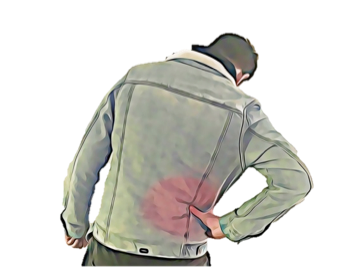
Spinal Stenosis
What is spinal stenosis?
The spinal cord, nerves and arteries are housed by the spine, which acts as a hard electrical casing to support and protect these vulnerable structures. The spine has a hollow column that allows the spinal cord to run from the brain to the rest of the body. At each spinal segment, nerves exit the spine and supply the tissues of the body. There is also an intricate network of small veins and arteries that provide blood to the spinal cord and vertebrae, providing them with the nutrients needed to operate.
Spinal stenosis is characterized by a narrowing of the spaces that house the spinal cord, nerves and blood supply. A variety of factors can cause spinal stenosis, however overwhelmingly it is caused by degenerative changes to the spine as we age. Many people over the age of 60 will have spinal stenosis; however, not all will have pain. Clinically, spinal stenosis is used to describe the painful symptoms of this condition rather than just the narrowing itself.
What are the symptoms?
Pain with walking or standing that radiates into the hips, thighs and even feet is the hallmark of spinal stenosis. Usually, this pain will be reduced with rest and forward movements of the spine. Spinal stenosis is a progressive condition and symptoms will gradually increase over time. The pain is often described as a deep radiating ache and can be associated with fatigue, heaviness, weakness and numbness. It can affect just one leg, however more often will be felt in both legs. There will often be associated back pain; however, leg pain is usually the most severe complaint.
How can physiotherapy help?
There are many conditions that need to be excluded before a diagnosis can be made. Your physiotherapist is able to conduct a thorough examination and accurately diagnose this condition. In some cases, imaging may be requested. As mentioned earlier, many people have stenotic spinal changes without symptoms. Surgery to decompress the restricted nerves and stabilize the spine are used in very severe cases.
For mild to moderate cases of spinal stenosis, physiotherapy can be extremely beneficial. Your physiotherapist can help you manage your pain through hands-on techniques and by providing a targeted exercise program based on biomechanical assessment. They are also able to help you to understand and manage your day in a way that helps to reduce flare-ups and maintain muscle strength.
If surgery is the right choice for you, your physiotherapist is able to guide you through this treatment pathway, helping you to prepare and recover from surgery to get the best outcome possible. None of the information in this newsletter is a replacement for proper medical advice. Always see a medical professional for advice on your condition.
Physio Direct is ACC accredited so you can come to us directly to get an injury registered with ACC without having to go to your GP first, followed by an assessment, treatment and follow up review, to ensure correct care and recovery. Physio Direct can also refer you directly for Cortisone injections, X-Rays and Ultra Sound Scans and on to Specialists if needed.
Please feel free to print out these news letters and put the in the staffroom and hand them out to your team. Understanding more about injuries, gives people the power to prevent an injury from occurring in the first place. Prevention and education is the key!
